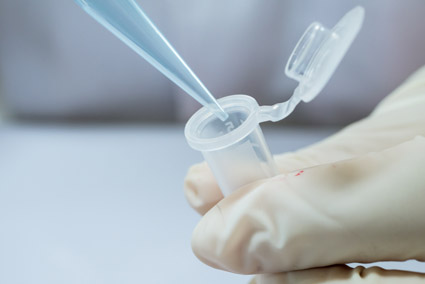Alt-R CRISPR-Cas systems
Overview
Cas9 and Cas12a are available as recombinant proteins, useful in a wide range of genome editing experiments. Important differences between Cas9 and Cas12a are described here to help you choose which system to use.

Alt-R™ CRISPR-Cas editing systems
CRISPR genome editing uses a CRISPR-associated (Cas) enzyme. Several Cas enzymes have been identified in various bacterial systems. Some of these have been adapted by scientists for use in eukaryotic systems. The two most popular enzymes used in CRISPR genome editing are Cas9 and Cas12a (Cpf1). These enzymes are highly functional, do not require binding to other enzymes as is the case for type I CRISPR systems, and can be readily programmed to target the desired genomic DNA site. This programming occurs through a short guide RNA (gRNA) molecule that is designed by the researcher. The Cas9 or Cas12a enzyme binds the gRNA, forming a ribonucleoprotein (RNP). Then, the gRNA directs the RNP to the targeted site in the genomic DNA, where the Cas enzyme cuts the genome.
The Alt-R CRISPR-Cas systems from IDT work as follows: You receive chemically synthesized gRNA and recombinant Cas enzyme (either Cas9 or Cas12a). You can also obtain positive and negative gRNA controls, an electroporation enhancer, a DNA donor for homology-directed repair (HDR), and an HDR enhancer based on your experimental needs. Once you have these reagents, you simply combine the gRNA and the Cas enzyme on the bench, forming the RNP, and then use electroporation to deliver this RNP to your cells. This is how genome editing is accomplished quickly and selectively. Ultimately you can determine your results using next generation sequencing (NGS).The CRISPR basics handbook
Everything you need to know about CRISPR, from A to Z, from theory to practice, for beginners as well as advanced users.
CRISPR-Cas9 OR Cas12a?
The Cas9 and Cas12a enzymes have some important differences. First, Cas9 recognizes a different protospacer-adjacent motif (PAM) than Cas12a does (Table 1). Second, Cas9 in nature uses a two-part guide RNA (crRNA and tracrRNA)—although for research purposes, these two parts are often fused as a single-guide RNA (sgRNA)—whereas Cas12a naturally uses just a one-part gRNA (crRNA).
Table 1. Comparison of Alt-R CRISPR-Cas9 and Cas12a systems.
| Feature | Cas9 system | Cas12a (Cpf1) system |
|---|---|---|
| Applications | General genome editing | General genome editing |
| Guide RNA options | crRNA and tracrRNA* | crRNA |
| Guide RNA lengths (native) | crRNA: 42 nt | crRNA: 42–44 nt |
| CRISPR enzyme | Class 2, Cas type II | Class 2, Cas type V |
| Enzyme variants | Wild-type | Wild-type |
| DNA cleavage | Wild-type and high fidelity: the blunt-ended cut is 3 bases upstream of the target protospacer sequence. Nickase: introduces a nick in one strand. dCas9: no cleavage. | A staggered cut is created. The 5′ overhang is near the 5′ end of the target protospacer sequence |
| PAM sequence† | NGG | TTTV for Cas12a V3 |
† N = any base; V = A, C, or G
* For help in choosing whether sgRNA, or the combination of crRNA and tracrRNA, is best for your application, see this DECODED article.
The Alt-R recombinant Cas enzymes can be directly used in a wide variety of cells, eliminating the need for plasmid expression. This significant time savings is augmented by our engineered Cas proteins, which increase editing efficiency. Our chemically modified Alt-R gRNA also improve CRISPR editing efficiency. Our Alt-R CRISPR systems are useful in a wide variety of cells and organisms, including mammalian cells, C. elegans, zebrafish, plants, and other systems. For plants in particular, the Cas12a system includes Cas12a Ultra, which is more active at lower temperatures than wild-type Cas12a protein.
Products for CRISPR genome editing
Alt-R™ CRISPR-Cas9 System
Efficient CRISPR reagents based on the commonly used Streptococcus pyogenes Cas9 system for lipofection or electroporation experiments. Protospacer adjacent motif (PAM) = NGG.
Alt-R™ CRISPR-Cas12a (Cpf1) System
For additional target sites or for targeting AT-rich regions, use the CRISPR-Cas12a system in electroporation experiments. Protospacer adjacent motif (PAM) = TTTV. The Alt-R Cas12a (Cpf1) Ultra also can recognize many TTTT PAM sites in addition to TTTV motifs, increasing target range for genome editing studies.
Explore resources
RUO22-1407_001